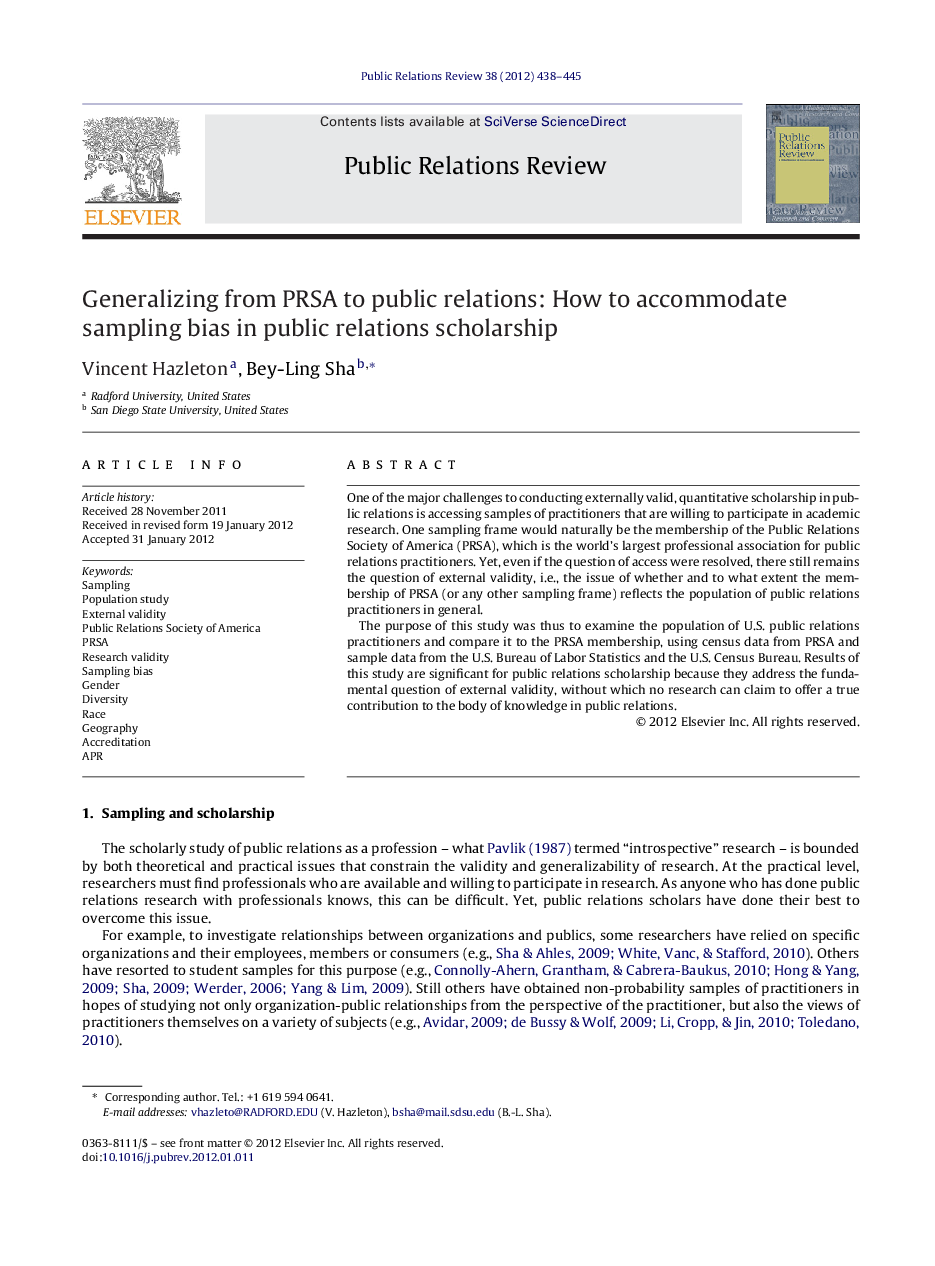| Article ID | Journal | Published Year | Pages | File Type |
|---|---|---|---|---|
| 139315 | Public Relations Review | 2012 | 8 Pages |
One of the major challenges to conducting externally valid, quantitative scholarship in public relations is accessing samples of practitioners that are willing to participate in academic research. One sampling frame would naturally be the membership of the Public Relations Society of America (PRSA), which is the world's largest professional association for public relations practitioners. Yet, even if the question of access were resolved, there still remains the question of external validity, i.e., the issue of whether and to what extent the membership of PRSA (or any other sampling frame) reflects the population of public relations practitioners in general.The purpose of this study was thus to examine the population of U.S. public relations practitioners and compare it to the PRSA membership, using census data from PRSA and sample data from the U.S. Bureau of Labor Statistics and the U.S. Census Bureau. Results of this study are significant for public relations scholarship because they address the fundamental question of external validity, without which no research can claim to offer a true contribution to the body of knowledge in public relations.
► For 2010, the Occupational Employment Statistics Survey (OES) of the U.S. Bureau of Labor Statistics estimates 331,900 public relations practitioners, whereas the Current Population Survey (CPS) of the U.S. Census Bureau estimates 233,000 practitioners. The Public Relations Society of America had 20,733 members in March 2010. ► CPS data yielded 36.5% respondents who identified themselves as managers, compared to only 17.1% in the OES data. ► Women comprised 70.7% of the PRSA membership, but only 59.2% of the population of public relations practitioners as estimated by the CPS, indicating that women are overrepresented among PRSA members. ► African American practitioners are slightly overrepresented among PRSA members, whereas Hispanic and Asian American practitioners are seriously underrepresented. ► With respect to geographic representation, the more populous states are underrepresented in PRSA, whereas practitioners from less populous states are more likely to be PRSA members. ► PRSA members who opt out of research participation differ from members who do not opt out, in terms of accreditation status, gender, and years of professional experience.
